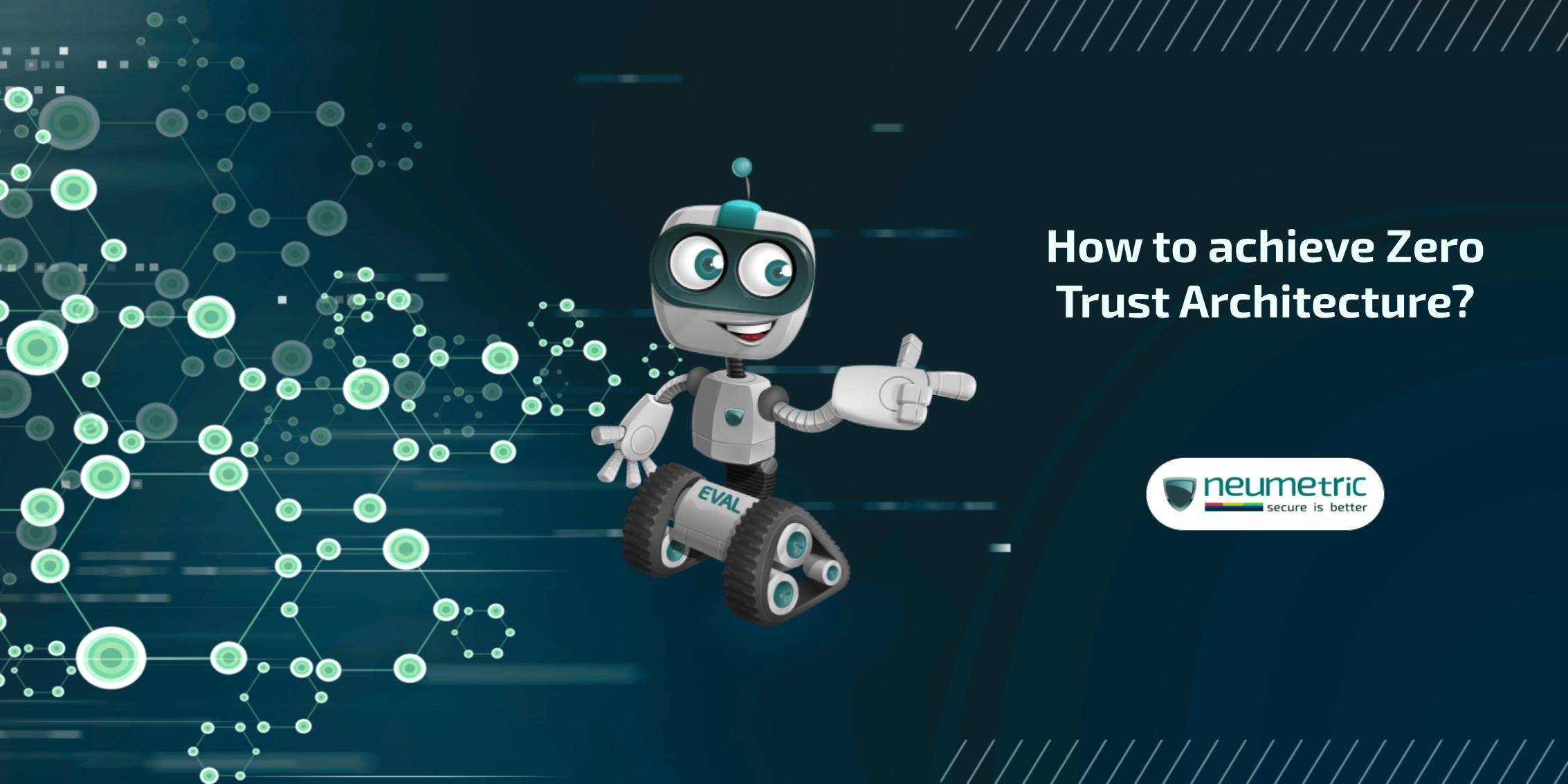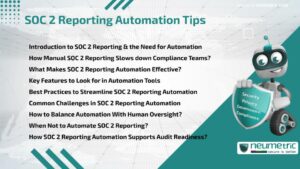Table of Contents
ToggleHow to achieve Zero Trust Architecture
Introduction
Zero Trust Architecture [ZTA] is a revolutionary approach to security that challenges the traditional notions of trust within networks. ZTA flips the script by adopting a zero-trust mindset. No longer can we assume safety based on location or network boundaries. Every user, device & application is treated as potentially untrusted, prompting a constant verification of trustworthiness.
To appreciate the significance of ZTA, let’s take a stroll through the evolutionary path of cybersecurity paradigms. We’ve transitioned from perimeter-based security, where the network boundary was considered the fortress, to a more dynamic & adaptable approach. As cyber threats have become more sophisticated, so must our defense mechanisms. ZTA represents the latest chapter in this evolution – a response to the ever-changing threat landscape.
Now, let’s talk about why you’re here. This journal serves as your roadmap to implementing Zero Trust, providing practical insights & strategies for achieving robust security in the digital age. It’s not just a theoretical concept; it’s a hands-on guide for organizations ready to embrace a proactive & resilient cyber security approach. As we navigate through the core principles, key components & building blocks of Zero Trust, you’ll gain the tools & knowledge needed to transform your security posture.
Understanding Zero Trust Architecture
Zero Trust is not a product; it’s a philosophy. We’ll break down the traditional trust model that assumes everything inside the network is safe. Instead, we’ll embrace a zero-trust mindset where trust is never implicit & must be continually verified.
Core Principles of Zero Trust
In a world where assumptions can be costly, Zero Trust Architecture [ZTA] emerges as a beacon of cybersecurity wisdom.
Breaking down the traditional trust model: Picture this: the traditional model where trust was granted based on the proximity of devices within a network. Unfortunately, this assumption of safety within the network’s perimeter has proven inadequate in the face of sophisticated cyber threats. ZTA challenges this outdated model, advocating for a shift in perspective.
Embracing a zero-trust mindset: Zero Trust isn’t just a strategy; it’s a mindset. It requires a fundamental shift in how we view security. Instead of trusting implicitly, ZTA mandates continuous verification. Every device, user or application, regardless of their location within the network, is treated as untrusted until proven otherwise. It’s a proactive approach to security that aligns with the dynamic nature of today’s threats.
Now, let’s delve into the foundational principles that make ZTA a robust security framework.
Least privilege access: The principle of least privilege dictates that individuals or systems should only have the minimum level of access required to perform their tasks. It’s about limiting permissions to the essentials, reducing the potential impact of a security breach.
Micro-segmentation: Think of your network as a city. Micro-segmentation is like dividing that city into neighborhoods, each with its security controls. If a threat infiltrates one area, micro-segmentation prevents lateral movement, keeping the rest of the city safe.
Continuous verification: Trust should never be static. ZTA emphasizes the need for continuous verification of user & device identities. This ongoing scrutiny ensures that trust is maintained throughout the entire user session or device interaction.
Device & user authentication: Security begins with verifying the legitimacy of devices & users. Robust authentication methods, including multi-factor authentication [MFA], play a pivotal role in confirming the identity of those interacting with the network.
Key Components of Zero Trust
Zero Trust isn’t a one-size-fits-all solution; it’s a comprehensive framework composed of crucial components.
Network security: The traditional castle-and-moat approach is outdated. ZTA redefines network security by focusing on securing every segment of the network, irrespective of its location. This adaptive approach is essential for thwarting modern cyber threats.
Identity & access management: ZTA places a premium on managing & controlling user identities & their access to resources. Role-based access controls & continuous user verification are integral components, ensuring that access is granted based on need & continuously monitored.
Data protection: Sensitive data is a prime target for cybercriminals. ZTA emphasizes encrypting data both in transit & at rest, safeguarding it from unauthorized access. Data loss prevention [DLP] measures add an extra layer of protection against potential leaks.
Endpoint security: Endpoints, including devices like laptops & smartphones, are often vulnerable entry points for cyber threats. ZTA reinforces security at the endpoint, ensuring that every device connecting to the network adheres to stringent security protocols.
Building Blocks of a Zero Trust Framework
Zero Trust Architecture is more than a concept; it’s a robust framework built on key building blocks that fortify your organization’s security posture.
Asset Inventory & Classification
Identifying & classifying organizational assets: Your first line of defense is understanding what you’re defending. Conduct a thorough inventory of your assets, from servers & databases to intellectual property [IP]. Knowing what you have is the initial step toward effective protection.
Prioritizing assets based on sensitivity: Not all assets are equal. Prioritize them based on sensitivity & criticality. This targeted approach ensures that your most valuable & vulnerable assets receive heightened protection, aligning with the core principle of least privilege access.
Identity Management
Role-based access controls [RBAC]: Granting access based on job roles is fundamental to ZTA. Role-based access controls ensure that individuals only have permissions necessary for their specific tasks. It’s about giving the right people the right level of access.
Multi-factor authentication: Passwords alone are no longer sufficient. MFA adds an extra layer of security by requiring users to provide multiple forms of identification, such as a password & a code sent to their mobile device. This additional step enhances the verification process.
Continuous user verification: Trust should be a constant, not a one-time event. ZTA mandates continuous user verification throughout their interaction with the network. This ensures that trust is maintained & monitored in real-time, adapting to the dynamic nature of user activities.
Network Segmentation
Micro-segmentation strategies: Think of micro-segmentation as creating digital neighborhoods within your network. By dividing your network into small, isolated segments, you limit the impact of a security breach. If one area is compromised, the lateral movement of threats is contained.
Limiting lateral movement within the network: Traditional security models assume threats are external. ZTA recognizes the potential for threats to originate internally. By limiting lateral movement within the network, ZTA prevents the spread of threats from one part of the network to another, enhancing overall security.
Data Encryption & Protection
Encrypting data-in-transit & data-at-rest: Sensitive data is a prime target for cybercriminals. ZTA mandates the encryption of data both in transit & at rest. This cryptographic protection ensures that even if intercepted, the data remains unreadable & secure.
Implementing data loss prevention measures: Data loss prevention is the proactive approach to safeguarding sensitive information. ZTA includes measures to prevent unauthorized access, sharing or leakage of data. By implementing DLP measures, you add an additional layer of protection against potential data breaches.
Implementation Strategies for Zero Trust Architecture
Zero Trust Architecture [ZTA] isn’t a one-size-fits-all solution; it’s a journey. Let’s explore practical strategies for implementing ZTA within your organization.
Phased Adoption Approach
Prioritizing critical assets & high-risk areas: Not all assets are created equal. Begin your ZTA journey by identifying & prioritizing critical assets & high-risk areas. By focusing on what matters most, you can allocate resources effectively & fortify your defenses where they are needed the most.
Gradual implementation to minimize disruptions: Rome wasn’t built in a day & your Zero Trust framework won’t be either. Opt for a gradual implementation to minimize disruptions to your day-to-day operations. Phased adoption allows for careful integration, testing & refinement, ensuring that security enhancements don’t come at the cost of operational efficiency.
Collaborative Culture
Fostering a zero-trust mindset across the organization: ZTA isn’t just about technology; it’s a cultural shift. Instill a zero-trust mindset across your organization by fostering a culture where skepticism is healthy & trust is earned, not assumed. Make security everyone’s business, from the C-suite to the front lines.
Employee training & awareness programs: Equip your team with the knowledge & tools to navigate the Zero Trust landscape. Conduct regular training sessions & awareness programs to empower employees to be active participants in maintaining a secure environment. The more informed your team is, the stronger the human firewall becomes.
Technology Integration
Selecting & implementing appropriate security tools: Invest wisely in security tools that align with Zero Trust principles. From robust authentication solutions to advanced network security tools, ensure that your technology stack complements & enhances your Zero Trust strategy. The right tools are your allies in the journey to a more secure digital landscape.
Integrating existing security infrastructure with ZTA components: Seamless integration is the key to successful Zero Trust implementation. Don’t reinvent the wheel; enhance your existing security infrastructure by integrating Zero Trust components. This approach not only streamlines the transition but also maximizes the value of your current investments.
Overcoming Challenges in Zero Trust Adoption
Implementing Zero Trust requires a cultural shift & change management is at the core of this transformation. Addressing resistance to cultural shifts: Change can be met with resistance. Communicate the need for a zero-trust mindset, emphasizing that it’s a proactive approach to security. Involve key stakeholders in the decision-making process to foster a sense of ownership.
Change Management: Change can be met with resistance. It’s crucial to acknowledge that adopting Zero Trust is not just a technological upgrade but a cultural shift. Address resistance by involving key stakeholders in the decision-making process, showcasing the benefits & emphasizing that ZTA is a proactive approach to security.
Communicating the benefits of Zero Trust to stakeholders: Communication is key. Clearly articulate the benefits of Zero Trust to stakeholders. Highlight how ZTA enhances security, reduces risks & creates a more resilient organization. When stakeholders understand the positive impact, they become advocates for the change.
Legacy Systems & Applications: Legacy systems pose a unique challenge, often incompatible with modern security frameworks. Develop strategies to secure these systems, including implementing compensating controls, regular security assessments & patches. Ensure that even the older components of your infrastructure are brought into the Zero Trust fold.
Gradual migration to ZTA-compatible solutions: Rome wasn’t migrated to Zero Trust in a day. Plan a gradual migration strategy for legacy systems, replacing or upgrading them with ZTA-compatible solutions over time. This phased approach ensures security is not compromised during the transition, allowing for a smooth adoption process.
Monitoring & Metrics: Continuous monitoring is the backbone of ZTA. Implement robust mechanisms for real-time monitoring of your network, endpoints & user activities. This proactive approach allows for the timely identification of anomalies & potential threats.
Metrics for assessing the effectiveness of Zero Trust: Define & track key performance indicators [KPIs] that align with your Zero Trust goals. Metrics such as the reduction in security incidents, improved response times & successful threat mitigations provide tangible evidence of the effectiveness of your Zero Trust implementation. Regularly assess & refine these metrics to ensure ongoing success.
Conclusion
Core principles & key components: Remember the pillars of ZTA – least privilege access, micro-segmentation, continuous verification & robust device & user authentication. These principles form the bedrock of a secure & dynamic cybersecurity strategy.
Building blocks & implementation strategies: From asset inventory & identity management to network segmentation & data protection, the building blocks of ZTA are diverse yet interconnected. The phased adoption approach, collaborative culture & seamless technology integration serve as effective strategies for implementation. As we conclude this journey into the realm of Zero Trust, it’s crucial to recognize its significance in modern cybersecurity.
Emphasizing the importance of ZTA in modern cybersecurity: Cyber threats are evolving & so must our defense mechanisms. Zero Trust is not just a response to today’s challenges; it’s an anticipatory strategy that positions organizations to withstand the unpredictable cyber landscape of tomorrow.
The journey towards a more resilient & secure digital landscape: Embracing Zero Trust isn’t just an initiative; it’s a journey towards resilience. It’s about fostering a culture where trust is earned, not assumed & where every aspect of your digital environment is under constant scrutiny. This journey leads to a more secure & robust digital landscape, one where threats are met with a fortified defense & where the organization is empowered to navigate the ever-changing cybersecurity horizon.
Frequently Asked Questions [FAQ]
Why should my organization consider adopting Zero Trust Architecture & how does it differ from traditional cybersecurity approaches?
Zero Trust Architecture is a game-changer in cybersecurity. Unlike traditional models that rely on a presumed trust within the network, ZTA challenges this assumption, adopting a more dynamic & proactive strategy. It’s about verifying trust continuously rather than assuming it upfront, creating a more resilient defense against evolving cyber threats.
How can we practically implement Zero Trust without causing major disruptions to our existing systems & operations?
Implementation is key & it doesn’t have to be a chaotic overhaul. Take a phased approach by prioritizing critical assets & high-risk areas. This way, you minimize disruptions & gradually introduce Zero Trust principles. It’s about strategic, well-thought-out steps to ensure a smooth transition without compromising your day-to-day operations.
What role does employee training play in the successful adoption of Zero Trust & how can we foster a zero-trust mindset across our organization?
Employee training is pivotal in embracing Zero Trust. It’s not just about technology; it’s a cultural shift. By fostering a zero-trust mindset across the organization through regular training & awareness programs, you empower your team to actively participate in maintaining a secure environment.





